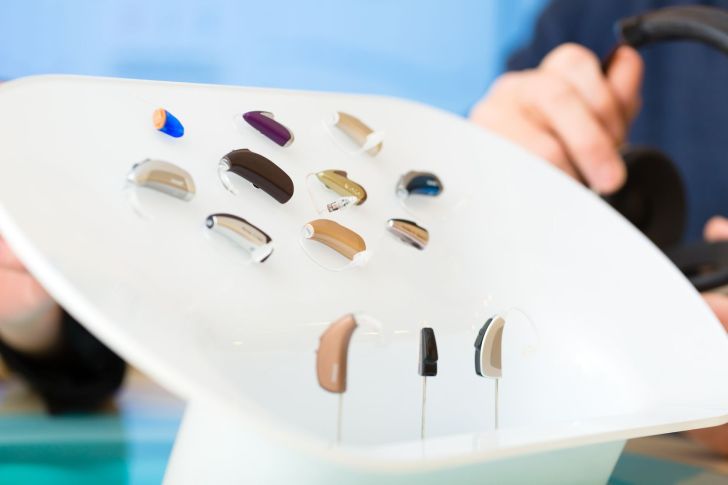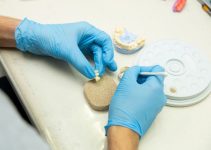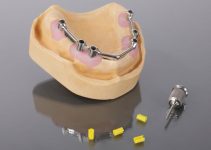Diminished hearing becomes a common health problem that is experienced by the elderly or seniors in general. Furthermore, in 2030, it is estimated that there will be about 28 million elderly suffering from hearing loss or Presbycusis. This condition cannot be cured but as it is known, it can be minimized by using hearing aid assistance for seniors and getting a new hearing aid.
Buying a new hearing aid can cost a lot of money and it will be difficult, especially for seniors who live with fixed incomes after retirement and need other health care. However, there are several ways that can be done to help them find one at a cheaper price up to free hearing aids for seniors. Before that, it is important to know what commonly used to be classified into 5 types of hearing aid.
5 Hearing Aid Types in Pros and Cons
- Receiver in the Canal Hearing Aid
With other names such as mBTE (mini-behind-the-ear), RITE (receiver-in-the-ear), and CRT (canal receiver technology) formats, the hearing aid sends voice to inside the ear canal. This tool is very convenient to use and not too visible when viewed from outside. In addition, the installation is also easy. The cons are that moisture and wax may limit the life of the speakers. It also doesn’t allow for significant amplification in the low frequencies.
- Behind the Ear Hearing Aid
Also called as RITA (receiver-in-the-aid), the hearing aid provides low and high-frequency amplification. This type is very suitable for seniors who suffer from severe hearing loss. Thus, he/she requires a lot of frequencies. The settings are easy and able to accommodate a larger battery as well as easy to carry. The lack of this tool is found in the custom molds that tend to be visible. It is also easy to sweat and wax buildup.
- Completely in the Canal Hearing Aid
The next hearing aid can be installed deep and tight in the ear so it can prevent whistling feedback when it is used to listen via phone. Placed inside the canal, it is very easy to be removed and invisible because of its small shape. In addition, it is also less sensitive to wind noise. Such a very small turn out too to be a weakness of this type. It is easy to wax and moisturize. Moreover, the battery is also difficult to install and remove.
- In-the-Canal Hearing Aid
The next to be option while having hearing aid assistance for seniors is In-the-Canal Hearing Aid. It is barely visible and it is also placed deeply in the canal, as the name implies. It includes directional microphones. On the other hand, the battery is small so this tool is short in life and quite difficult to be controlled and handle.
- In-the-Ear Hearing Aid
The last in hearing aid types come to In-the-Ear Hearing Aid. This type is quite easy to install and has plenty of space or access for a telecoil, directional microphones, and volume control. However, it is very visible with a fairly large shape. For your information, telecoil itself is a kind of small copper wire that carries the sound directly from the phone and public address system. This will affect the clarity of sound to be received by reducing background noise and reverberation.
Back to the problem of resources to get financial help with a hearing aid, it turns out there are many organizations that will help seniors to get a hearing aid. Here are the best recommendations for you.
5 Recommendations for Hearing Aid Assistance for Seniors
- Audiologist
The first choice and very first reference commonly is on your own audiologist. Besides being the one who knows the ins and outs of the problems suffered by the patient, he/she may also know some places to be recommended. Patients can ask about local non-profit organizations to help get a hearing aid for free. The low-cost hearing aids for seniors are provided according to the needs of the patient even though no special programs are offered.
- Audient
Next hearing care is offered by Audient. It is specifically given to seniors with low incomes. Seniors can access the program application or phone at 1-866-956-5400. They also can find out more information at audientalliance.org. The new hearing aid can be obtained at a reduced price from $495 to $975 for one and about $990 to $1,575 for a pair. To be eligible for the program, a senior must have an income below $27,075 for a single or $36,425 for couples.
- Hearing Loss Association of America
The Hearing Loss Association of America offers lots of important information related to contact financial aid assistance programs. Although it does not directly provide assistance to get hearing aid at low prices, this site always provides up-to-date information including for veterans or through Medicaid.
- Lions Affordable Hearing Aid Project (AHAP)
Given through several local Lions Clubs in the US, this program helps seniors with a certain income to get free hearing aids for low income which is priced around $200 per aid, plus shipping manufactured by Rexton. Based on income, seniors who enter the low-income category under $22,340 for singles, or $ 30,260 for couples, can follow the program. Just access the AHAP form online or call (630) 203-3837.
- HEAR Now
Under the control of the Starkey Hearing Foundation, the program also helps low-income seniors get hearing aids by simply paying for a hearing test and an application fee of $125 per hearing aid request. It is only available for people with income below $19,058 for a single or $25,743 for couples. For more information, people can visit starkeyhearingfoundation.org or make a call at 800-328-8602.
Special Tips to Keep the Aid in Cares
As a final mark, it seems incomplete if not give a few tips for treating the hearing aid. This is also one of the important and suggested things to do. First, make sure to always keep it dry. Off it when the senior is in the bathroom or about to swim. Be sure also to keep it clean by always washing hands when removing or putting on the device. Then, protect it from direct sunlight and routinely check with an audiologist or technician every 6 months to ensure its performance.
Remove the moisture by using a special dryer designed for hearing aid. Also, check the battery periodically and replace it with a new one if the old battery is not working as well as before. When released, store in a dry and safe place especially out of reach of children and pets. However, do not put it in a pocket to avoid it being washed in a washing machine. Those are guidelines the seniors love to know before getting hearing aid assistance for seniors.
Related Articles You Might Like:
References:
- 4 Seniors: Hearing Aid Program for Seniors
- Free Hearing Aids for the Elderly
- Tips for Hearing Aid Care to Help Senior Loved Ones Stay Engaged
- Image: digitaltrends.com




